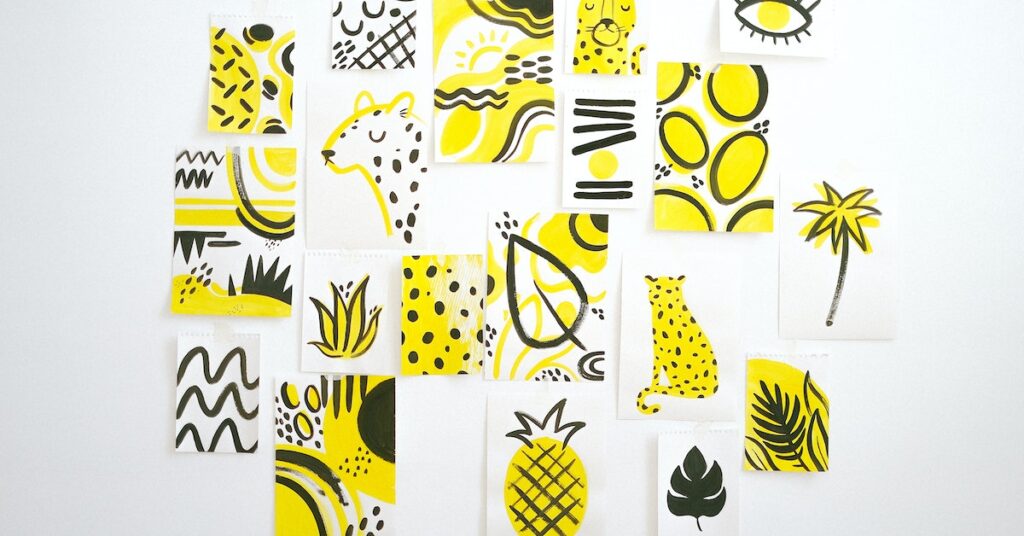One of the best ways to improve art is to practice every day. Whether you struggle with shading or consistently painting lines, a daily practice session can improve your art. It’s a good idea to learn one new technique a week and dedicate time to it on a daily basis. Creating an original work of art begins with an artist’s ability to express his ideas and convey those ideas in the most expressive way possible.
Doing something every single day
If you want to improve your art, doing something every day is a great way to stay motivated and focused. Practicing makes perfect, and doing something every day will help you improve your skills, motor memory, and efficiency. It also helps you set goals and stay on track with progress.
Learning new techniques
Practicing new techniques is an essential part of improving your art. While there’s no guarantee that you will see improvement overnight, you can always improve art your technique over time by trying new things. If you’re struggling with an artistic block, try something different to get your creativity flowing again. By using a variety of different mediums and techniques, you can free yourself from this block and challenge yourself to try something new. Practicing new techniques will also help you strengthen your skills and develop new ones.
When you’re working on your art, remember to take breaks every once in a while. Don’t spend too much time on one piece or you’ll start developing backwards. Taking breaks can also help you come up with new ideas and improve your style. You might even want to repeat a drawing to see how your style develops.
Copying artists
If you are a beginner artist, you might be tempted to copy the work of other artists. This is perfectly acceptable, as long as you are doing so to learn and improve your own work. However, copying other artists’ works for profit is not a good idea. These artists have spent years perfecting their craft, time and money sharing it with the community.
Using the work of other artists as a model can inspire you to create original works. This way, you can gain a deeper understanding of the artist’s process and style. It can also help you to improve your drawing skills. In addition to that, you’ll be able to see the decisions that were made by the artist and the techniques used. You can also learn about composition, color mixing, light, and shadow by copying an artist’s work.
In one study, the participants who copied an artist’s work were rated to be more creative than participants who didn’t copy other artists’ work. They were able to create more experimental pieces and realistic drawings than the control group. By comparing different styles, they were able to create a more unique drawing that reflected their own personal style.
Although it’s important to be inspired by the work of other artists, it’s important not to copy anything exactly unless you’re genuinely inspired by the work. Copying works from famous artists is an accepted method of art education for many years, especially in the field of painting. However, if you do copy someone else’s work without their permission, you could face severe penalties.
The purpose of copying is to learn. However, you should focus on learning what you should learn. By analyzing the steps that you are struggling with, you should identify the skills that you need to work on. If you are having trouble with a particular step, you should look for projects that require these skills to solve.
Learning colour theory
Colour theory is the study of colour relationships and how to use it in your art. The basic rule is that complementary colours are those that have opposite wavelengths. There are also analogous and triadic color schemes. Complementary pairs can be grouped together in an art work to create visual harmony.
There are several books that can help you learn about colour theory. Many of these focus on specific types of art. For example, there are books and online tutorials that focus on the theory of colour in painting and drawing. Other resources include websites that can help you learn the fundamentals of colour, which can help you decide on the perfect colour scheme for a painting. Learning about colour theory can be useful for artists of all levels.
Colour theory is important for artists because it helps them control the emotions of their viewers. It also helps them create the effects they want to convey. This is because artists think about colour temperature, colour harmony, and colour contrast. By understanding these principles, artists can better control the feeling of the viewer and create the mood they want.
Color theory is extremely complicated, but it is essential for artists to understand the basic principles. The best way to learn the fundamentals is to make a color wheel with paint. Another technique that helps you understand the science of mixing colors is by using value charts. These value charts allow you to create a range of different values of the same color.
Another book that will help you understand colour theory is Colour Theory for Artists by Jean Fraisse. This book teaches students how to apply color psychology to their work. The text also includes tips for interpreting other designers’ work and using color to create a unique image.
Studying the figure
Learning how to draw the figure can help you improve your art. The human body is a complex machine, and even though its structure is fairly simple, the details of how body parts function and interact will help you improve your art. For example, drawing a portrait requires you to study how the human body moves and how to represent each part.
Since classical times, artists have considered studying the human figure a foundational element of their work. In the Renaissance, figure drawing was an important part of formal artistic training. Even avant-garde artists who disdained traditional academic training continued to study the human figure as a way to create innovative representations of contemporary life. Michelangelo’s studies of the human form are considered some of his most famous works.
Studying the figure improves art by developing the ability to accurately capture life. The goal of figure drawing is to capture the essence of life as the artist sees it. In order to be able to accomplish this goal, one must develop the ability to trust their perception. A good understanding of anatomy will improve your sketching, illustration, and digital art skills.








